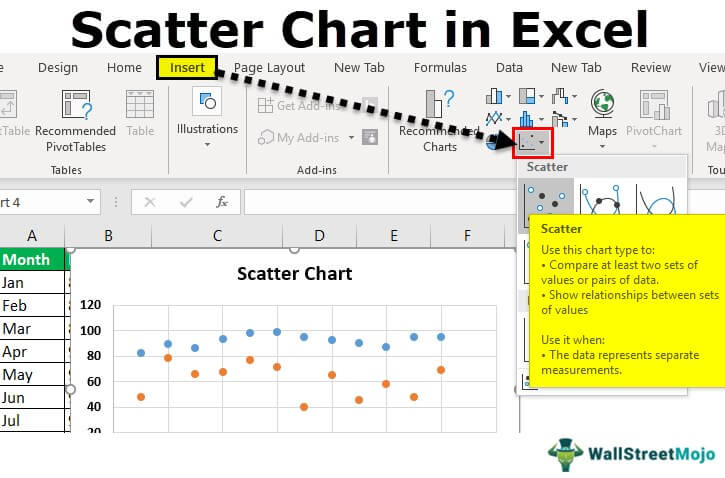
:max_bytes(150000):strip_icc()/006-how-to-create-a-scatter-plot-in-excel-284be62790d04f9588f45dbfb5c26e11.jpg)
In the Series Options area, select Secondary Axis and close the dialog box. Right-click the bundle of data markers that represents the newly added series and open the Format Series dialog (my preferred keyboard shortcut for that is Ctrl-1). Step 4 – send the main data to the secondary axis Since the scale of the existing axes ranges from-20 to 20 and the newly added data series is between 0 and 1, it all bunches up in one place. You’ll see a scramble of overlapping data points near the 0 cross-point of the two axes. Set the option to add the pasted values as a new series, with Values (Y) in Columns, and tick the Categories (X Labels) in First Column tick box. Now click the chart and use Paste Special. Next, select the data in columns A and B, starting in A2 (i.e. Click each data series and set the line to none. The helper series are now no longer required, but we will just hide them instead of deleting them, so that their values still have an effect on the axes we see. After that, the chart looks something like this: Select each axis and set the minimum value to -20, maximum value to 20 and major unit to 5. The result should look something like this:įormat each data series to show no markers, but set a visible line. Next, go to edit the data series set:Īdd a second data series with the settings: Select F2:G3, insert an XY chart and hit OK. Then, a second series is added with the data in F5:G6. The first step is to create an XY chart from the data in F2:G3. The data series will ultimately be formatted to be hidden, but to start the chart off, they will be visible. The quadrant data series are two dummy series that will be used only to set the X and Y axis for the quadrant dividers.

This data will ultimately be plotted on the outer X and Y axes of the chart, which will be formatted to show percentages from 100% down to 0%.įirst, though, we need to take care of the lines that demarcate the quadrants. For this example, RANDBETWEEN was used to create a data sample with values ranging from 0 to 1. The plotted data points are sourced from these two columns of values.

Extra challenge: The X and Y axis run from 100% to 0% instead of the normal 0 to 100.įollowing is a step-by step for creating such a chart. The goal: create a chart in Excel that plots data points on a percentage scale for X and Y, and also shows quadrants with a different scale.


 0 kommentar(er)
0 kommentar(er)
